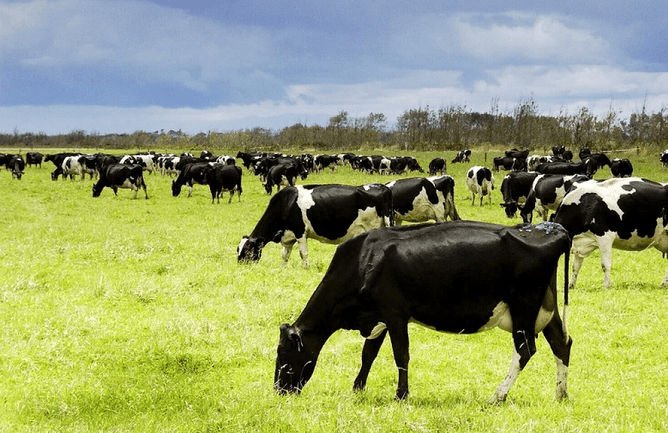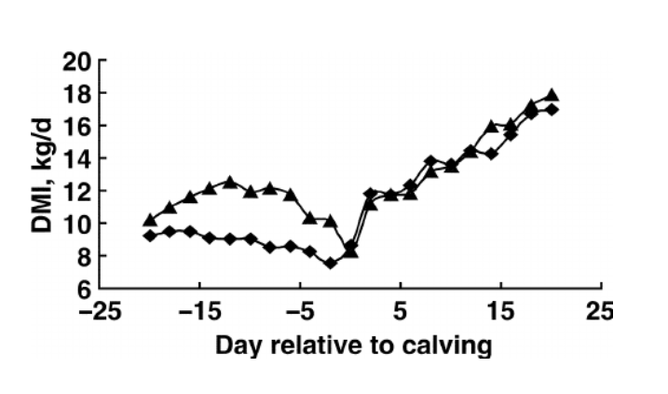Plan ahead to reduce the risk of disease and financial losses around calving.
Although this season has officially not ended yet, we must look to next season already. There are diet changes ahead and every change requires time for the rumen to adjust.
The first upcoming diet change is going from a milking diet to a dry cow diet and then, a month or two later, back to a milking diet.
These changes must be done slowly and in little steps. Adjusting to the new diet takes about 2 weeks and, if not done properly, you will have down cows, lame cows, slips and, sometimes, even dead cows!
The transition period
The most important change is from a dry cow diet to a milking cow diet, which is often done over the transition period.
The transition period is officially defined as the four weeks before and after calving and is often linked to an increased risk of several diseases.
In this period, the cow is preparing herself for lactation and this requires a series of changes in her metabolism.
During this time, the aim is to:
Reduce ruminal disruption (so she keeps on eating);
Minimise mineral deficiencies (fewer down cows, crawlers etc);
Reduce fast fat mobilisation (which can lead to ketosis and fatty liver problems);
Avoid immunosuppression (often copper, selenium, zinc, iodine, vitamin E and vitamin D are involved here).
In adult dairy cattle, 80% of animal health costs have started through issues in the first four weeks post-calving!
After calving, the nutrition and management of dairy cows is to regulate metabolic processes to drive udder development, recovery of her appetite and immune function, and to start up reproductive activity so she cycles well and is ready for mating when we need her to be!
We all know that cows with a higher body condition score at calving have better repro results.
Below is a graph showing the effects of dry matter intake around calving with and without a transition diet:
A reduction in feed intake before calving, combined with a not-completely balanced diet, can cause a cascade of health issues post-calving.
Milk fever, calving mastitis and retained membranes are the most known ones, but other diseases are also reduced by good transition management!
Health targets around calving
Achievable targets for health problems (if occurring within 14 days of calving) are:
Milk fever: 1%. (2% for older cows, over 8 years)
Clinical mastitis: <5 cases/100 cows for the first 30 days post-calving
Grass staggers: 0%
Retained membranes: <4%
Vaginal discharge after 14 days: <3%.
The cost of disease
The above diseases can become costly very quickly! Some of the direct costs are well researched in New Zealand, however, the indirect cost on reproduction and production are harder to quantify.
Milk fever:
According to Dairy NZ, a 2000 NZ study showed that cows suffering from clinical milk fever produced 14% less milk, with subclinical cases producing 7% less milk. As a result, milk fever was estimated to cost farmers $8000 per 100 cows on an average dairy farm.
It is important to remember that milk fever is also a gateway disease - increasing the risk of cows getting other metabolic diseases and infections.
Remember, for every case of milk fever we can see, there may be eight or more subclinical cases!
Mastitis:
Mastitis cases cost an average herd about $15,000 per year. Again, these are the cases we see and the subclinical, high somatic cell count cows are not considered!
Endometritis:
If an endometritis case (discharge from uterus, often after having retained membranes) is not treated, it could cost a farmer around $440 per cow by a reduction in appetite and production.
Balanced transition diet
A balanced transition diet considers energy and protein levels, micro- and macro-minerals (Ca, Mg and P, as well as K, Na, Cl and S), often some rumen modifiers and buffers.
In New Zealand, there are several companies who have a ‘transition mineral mix’ in their product range. We always say there are ‘gold’, ‘silver’ and ‘bronze’ options.
Unfortunately, there are also ‘tin’ options around, which don’t actually work! Not every product is the right product for your farm. You should not have to change your system to make the product work.
If your herd's health problems are higher than the above targets, it might be worthwhile discussing your transition management with one of our vets. Now is the time to start planning for transition!


